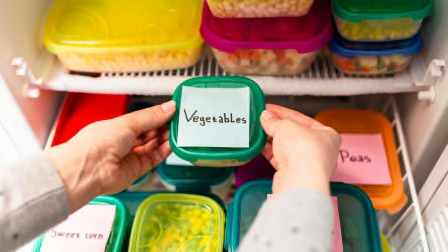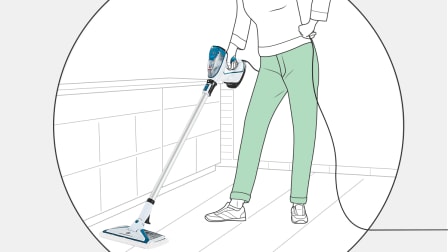CDC Says Most Americans Don't Need to Wear Masks
Under the agency's newly relaxed guidelines, most people don't need to wear masks indoors anymore. But some experts urge caution.

The Centers for Disease Control and Prevention says more than 70 percent of Americans no longer need to wear masks indoors in public areas. That’s the upshot of an announcement the agency made on Feb. 25, detailing the factors it is now using to determine whether to recommend universal masking indoors.
Previously, the agency had said that anyone ages 2 and up, regardless of vaccination status, should wear a mask indoors in public areas if their area was experiencing high or substantial levels of transmission of COVID-19. Under that system, 95 percent of U.S. counties were considered to have high or substantial levels of transmission.
But the agency’s new guidelines about who should wear a mask aren’t based solely on local transmission levels. Instead, to determine whether each county has high, medium, or low COVID-19 “community levels,” the CDC is now relying on three metrics: new hospitalizations for COVID-19, current hospital beds occupied by people who have COVID-19, and new cases of COVID-19.
Under this new formula, only 37 percent of counties, representing 28 percent of the U.S. population, now meet the criteria for high COVID-19 community levels. People in these areas should wear masks indoors in public, the CDC says. The rest of the country is classified as having medium COVID-19 community levels—where the agency advises that people at increased risk talk to their provider about wearing a mask—or low COVID-19 community levels, where the CDC’s guidance no longer includes masking up (except in specific circumstances).
The new guidance also applies to schools, where universal masking is now recommended only in counties experiencing high COVID-19 community levels. You can look up the community level where you live here.
Should You Still Wear a Mask?
Some experts say that wearing a mask could still be prudent, even in areas where the CDC isn’t actively recommending it.
“In my opinion, the CDC relaxation of the mask guidance is coming much too soon,” says Jose-Luis Jimenez, PhD, an aerosol scientist at the University of Colorado Boulder. He thinks the mask mandates should remain until case rates are much lower.
Plus, while the new guidance focuses on hospital capacity, plenty of suffering from COVID-19 happens outside hospitals among people who develop chronic illness or “long COVID” after recovering from the acute infection. “The CDC’s actions don’t seem to take long COVID into account at all,” Jimenez says.
In addition, new variants beyond omicron can—and likely will—arise in the future, says CR’s chief scientific officer, James Dickerson, PhD. And even though cases are declining, the pandemic is far from over, he says. “Who knows what is even just a few days in front of us?”
The CDC emphasized that people can still wear a mask if they feel more comfortable doing so.
“Please remember that there are people who remain at higher risk for COVID-19 and who may need additional protection,” Walensky said. That includes those who are immunocompromised or have underlying health conditions, people with disabilities, and those who live with people who are at risk. “Those people might choose to take extra precautions, regardless of what level their community is in,” she said.
Officials noted that people who wear a high-quality mask have good protection against infection, even when others around them aren’t masked.
And Alex Huffman, PhD, an aerosol scientist and professor of chemistry at the University of Denver, notes that when large numbers of people wear high-quality masks in enclosed places, it “multiplies the benefit for everyone, and so risks go down further for the whole community.”
He says he’s hesitant to support relaxing masking guidance just yet, and he urges people to keep an eye on conditions in their communities, workplaces, and schools.
“If rates are still high, I strongly recommend wearing tight-fitting masks when in rooms with other people,” Huffman says. “We’re making tremendous progress on slowing the spread of COVID, but it’s not over yet. A little more effort could go a long way to bringing rates even lower and preventing further disease.”




















